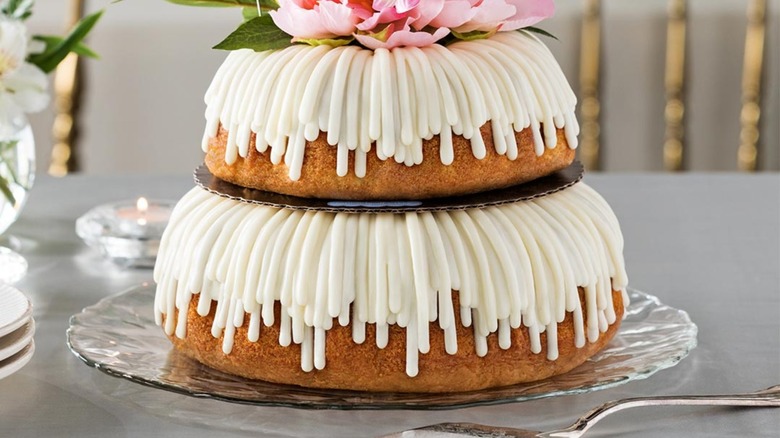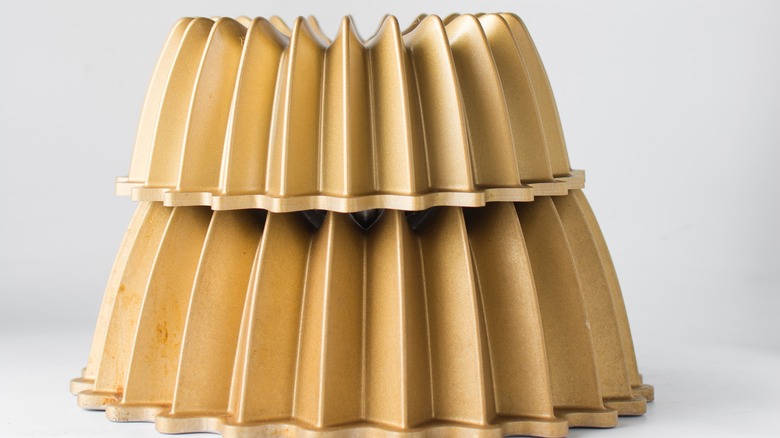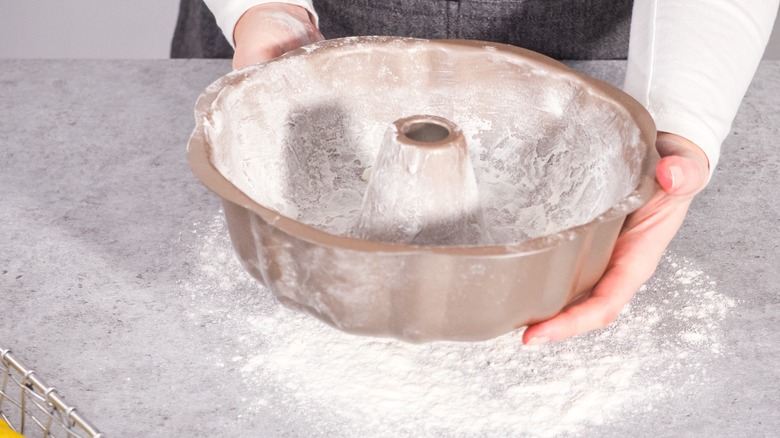Stack Your Bundt Cakes For A Truly Showstopping Dessert
If you've ever felt like pulling out all the stops for your next cake, look no further than Bundt cakes. The fluted cake pans range from plain and simple to intricate designs, and the results only need a glaze or some candied fruit to look stunning. The cake itself can be a simple yellow sponge or something more complex in both effort and flavor. No matter what batter you go with, it's sure to bring oohs and aahs from your guests, both for its visuals and taste.
To truly elevate — no pun intended — your Bundt cake game, you can channel your inner "Great British Baking Show" contestant by stacking your Bundt cakes for the ultimate showstopping dessert. The layers plus the intricate designs of some Bundt pans make for a truly stunning dessert that wouldn't be out of place at a wedding reception or as a centerpiece for a holiday dessert table. All you need is a set of nested Bundt cake pans and you're on your way to a true showstopper.
How to safely stack your Bundt cakes
You could stack the Bundt cakes one on top of the other, but Bundt cakes don't have a middle, so the outside of the lower cakes will take the weight of the cake above it. It's best to secure the layers as best and seamlessly as possible. To prevent any layer cake mistakes or "GBBS"-level meltdowns, there are ways to make sure things stay secure.
You can use milkshake or boba tea straws, which are thicker than the straw you get with your soda. Inserting them into the cakes will give them the structural integrity they need to support the layer above it. A good rule of thumb is to use one straw for every inch of cake you have, so a six-inch cake would need six straws placed evenly around the cake. Plastic and wooden dowel rods are essential for stacking support. If you're worried about stability, look into using cake boards under each layer, or using plastic or Styrofoam that fits in the middle of the cake to provide extra support for the higher levels.
Get your Bundt cake to release smoothly for the perfect stacked look
To bake your best Bundt cake yet, and whether you're serving them solo or stacked to the skies, there are a few tricks to follow. Start by using non-stick Bundt pans that are in good condition. Do a visual inspection and run your finger through the divots to be sure it's not scratched: Scratches and nicks indicate that the surface may not be as non-stick as it needs to be.
The trickiest part of baking a Bundt cake is turning the cake out cleanly. The more intricate the design on your pan, the more difficult it'll be to release, especially if it's not properly greased. You shouldn't grease your Bundt pan with butter, as the milk solids will make a clean release almost impossible. Applying shortening into each nook and cranny with a pastry brush should do the trick. Then dust the Bundt pan with flour, cocoa powder, or granulated sugar. AP flour tends to leave behind a gummy texture, but nut flour, such as almond flour — or opting for granulated sugar — will add an extra layer of texture to your cake.
After baking, use a thin knife or a small silicone spatula and carefully work your way between the tin and the cake to release it. You don't want to scratch the non-stick coating. Allow it to cool, and don't be afraid to cool it upside down — gravity is your friend.


